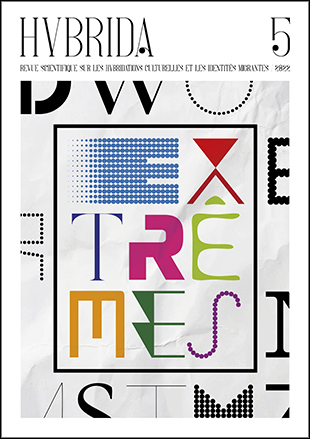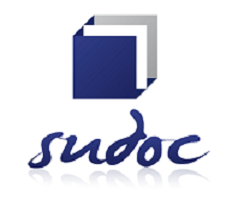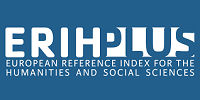Hybridizations of the animal-woman in Boris Vian’s short stories
DOI:
https://doi.org/10.7203/HYBRIDA.5(12/2022).23711Keywords:
hybridizations, animal-woman, garçonne, pin-up, short stories Abstract
Abstract
The place given to the female character in Boris Vian is very distinctive. She is often presented as a secondary character. Yet, although the appearances of female characters in the stories may be succinct, their development as characters is far from simple. They undergo body transformations that grant them an animal nature. With this privileged space of the female character, which places her between two worlds, the author succeeds in presenting a panorama of the position of women in the twentieth century, from the garçonne to the pin-up. However, these characters fit into the sphere described under the term langage-univers coined by Jacques Bens. For this study, we focus on the author’s short stories, which, despite their brevity, offer a range of hybridizations of the animal-woman.
 Downloads
Downloads
 References
References
Adams, C. J. (2011). The sexual politics of meat : a feminist-vegetarian critical theory. Continuum.
Arnaud, N. (1981). Les vies parallèles de Boris Vian. Christian Bourgois.
Beauvoir, S. (2020). Le deuxième sexe, I : Les faits et les mythes. Gallimard.
Bens, J. (1963). Un langage-univers. In B. Vian, L’écume des jours (pp.177-187). Union générale d’éditions.
Clancier, A. (1977). Qu’est-ce qui fait courir Boris Vian ? In N. Arnaud et H. Baudin (Dirs.), Boris Vian : Colloque de Cerisy (vol. 2, pp. 49-85). Union générale d’éditions.
CNRTL. (s.d.). Grue. https://www.cnrtl.fr/definition/grue
Cortijo Talavera, A. (2003). El sistema de personajes en la obra narrativa de Boris Vian [Thèse de Doctorat, Universitat de València]. https://www.tdx.cat/handle/10803/9831
Cusácovich Torres, A. (2021). Lo femenino en L’Écume des jours de Boris Vian: una visión ecocrítica [Thèse de Doctorat, UNED]. http://e-spacio.uned.es/fez/eserv/tesisuned:ED-Pg-Filologia-Acusacovich/CUSACOVICH_TORRES_Ainhoa_Tesis.pdf
De Cabo, M. et Montecchio, E. (2019). La mujer natural : la influencia de Charles Baudelaire en L’Automne à Pékin de Boris Vian. Tropelías. Revista de Teoría de la Literatura y Literatura Comparada, 31, 284-296. https://doi.org/10.26754/ojs_tropelias/tropelias.2019312984
Dickhoff, H. (1977). Approche discrète des nouvelles de Boris Vian. In N. Arnaud et H. Baudin (Dirs.), Boris Vian : Colloque de Cerisy (vol. 1, pp. 333-335). Union générale d’éditions.
Expósito García, M. (2016). De la garçonne a la pin-up : Mujeres y hombres en el siglo XX. Ediciones Cátedra.
Favre, C. (2018). The pin-up: American eroticism and patriotism during the Second World War. Inflexions, 38, 181-186. https://doi.org/10.3917/infle.038.0181
Haenlin, L.J. (1976). Les Comparaisons de Boris Vian : éléments d’une rhétorique de dissuasion, The French Review, 50(2), 278-283. http://www.jstor.org/stable/390087
Rybalka, M. (1969). Boris Vian : essai d’interprétation et de documentation. Lettres Modernes.
Vian, B. (1962). L’herbe rouge. Jean-Jacques Pauvert.
Vian, B. (1967). L’herbe rouge (roman), Les lurettes fourrées (nouvelles inédites). Jean-Jacques Pauvert.
Vian, B. (1983). Le ratichon baigneur et autres nouvelles inédites. France Loisirs.
Vian, B. (2010). Œuvres romanesques complètes, I. Gallimard.
Vian, B. (2011). Le loup-garou et autres nouvelles. Librairie Générale Française.
Vian, B. (2015). Blues pour un chat noir et autres nouvelles. Librairie Générale Française.
Vian, B. (2016). Les fourmis. Librairie Générale Française.
Published
How to Cite
-
Abstract514
-
HTML (Français )409
-
PDF (Français )282
Issue
Section
License
![]()
All the documents in the OJS platform are open access and property of their respective authors.
Authors publishing in the journal agree to the following terms:
- Authors keep the rights and guarantee HYBRIDA the right to be the first publication of the document, licensed under a Creative Commons license Attribution-NonCommercial-ShareAlike 4.0 International (CC BY-NC-SA 4.0) that allows others to share the work with an acknowledgement of authorship and publication in the journal.
- Authors are allowed and encouraged to spread their work (once published) through electronic means using personal or institutional websites (institutional open archives, personal websites or professional and academic networks profiles) once the text has been published.
















